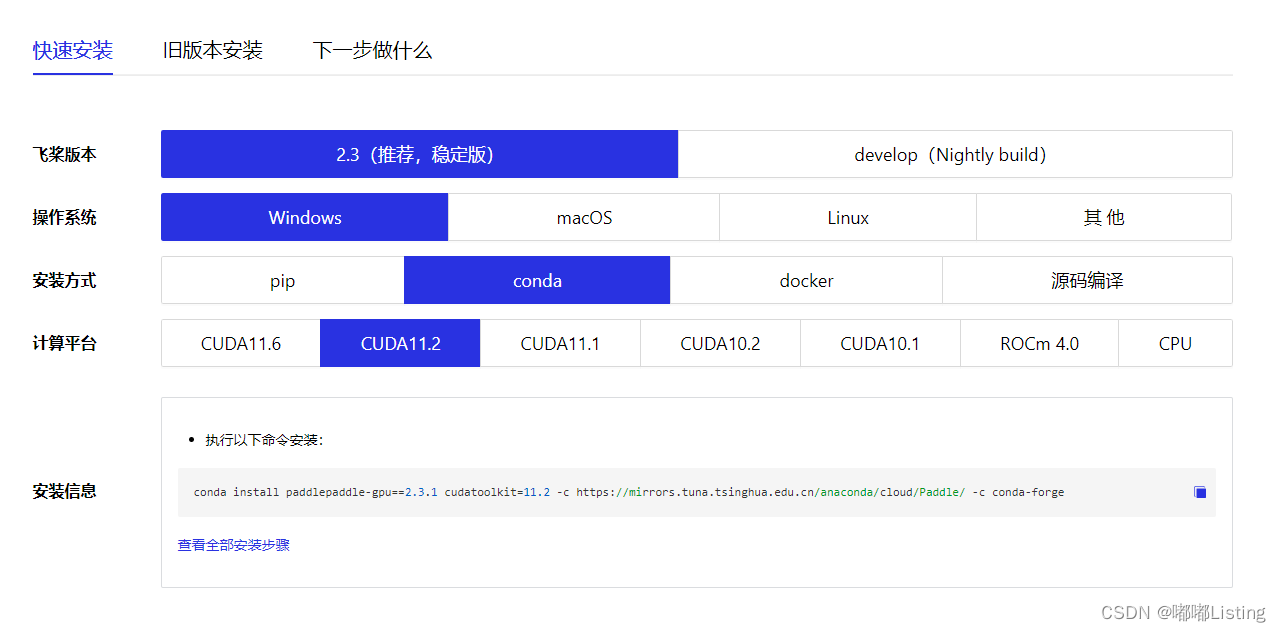
PaddleOCR实验过程记录
PaddleOCR
Awesome multilingual OCR toolkits based on PaddlePaddle (practical ultra lightweight OCR system, support 80+ languages recognition, provide data annotation and synthesis tools, support training and deployment among server, mobile, embedded and IoT devices)
项目地址:https://gitcode.com/gh_mirrors/pa/PaddleOCR
·
一、环境准备
快速安装:
检查是否安装成功:
pip install paddlehub -i https://pypi.tuna.tsinghua.edu.cn/simple
#该Module依赖于第三方库shapely、pyclipper,使用该Module之前,请先安装shapely、pyclipper
pip install shapely -i https://pypi.tuna.tsinghua.edu.cn/simple
pip install pyclipper -i https://pypi.tuna.tsinghua.edu.cn/simple PaddleHub一键OCR中文识别(超轻量8.1M模型,火爆) - 飞桨AI Studio
import matplotlib.pyplot as plt
import matplotlib.image as mpimg
# 待预测图片
test_img_path = ["./advertisement.jpg", "./pics.jpg", "./identity_card.jpg", "./express.jpg", "./railway_ticket.jpg"]
# 展示其中广告信息图片
img1 = mpimg.imread(test_img_path[0])
plt.figure(figsize=(10,10))
plt.imshow(img1)
plt.axis('off')
plt.show() 
二、加载预训练模型
import paddlehub as hub
# 加载移动端预训练模型
# ocr = hub.Module(name="chinese_ocr_db_crnn_mobile")
# 服务端可以加载大模型,效果更好
ocr = hub.Module(name="chinese_ocr_db_crnn_server") 
三、预测

import cv2
# 读取测试文件夹test.txt中的照片路径
np_images =[cv2.imread(path+image_path) for image_path in test_img_path]
results = ocr.recognize_text(
images=np_images, # 图片数据,ndarray.shape 为 [H, W, C],BGR格式;
use_gpu=False, # 是否使用 GPU;若使用GPU,请先设置CUDA_VISIBLE_DEVICES环境变量
output_dir='ocr_result', # 图片的保存路径,默认设为 ocr_result;
visualization=True, # 是否将识别结果保存为图片文件;
box_thresh=0.5, # 检测文本框置信度的阈值;
text_thresh=0.5) # 识别中文文本置信度的阈值;
for result in results:
data = result['data']
save_path = result['save_path']
for infomation in data:
print('text: ', infomation['text'], '\nconfidence: ', infomation['confidence'], '\ntext_box_position: ', infomation['text_box_position'])recognize_text()接口返回结果results说明:
- results (list[dict]): 识别结果的列表,列表中每一个元素为 dict,各字段为:
- data (list[dict]): 识别文本结果,列表中每一个元素为 dict,各字段为:
- text(str): 识别得到的文本
- confidence(float): 识别文本结果置信度
- text_box_position(list): 文本框在原图中的像素坐标,4*2的矩阵,依次表示文本框左下、右下、右上、左上顶点的坐标 如果无识别结果则data为[]
- save_path (str, optional): 识别结果的保存路径,如不保存图片则save_path为''
- data (list[dict]): 识别文本结果,列表中每一个元素为 dict,各字段为:
四、服务部署
第一步:启动PaddleHub Serving

第二步:发送预测请求
import requests
import json
import cv2
import base64
def cv2_to_base64(image):
data = cv2.imencode('.jpg', image)[1]
return base64.b64encode(data.tostring()).decode('utf8')
# 发送HTTP请求
data = {'images':[cv2_to_base64(cv2.imread("D:/OCR/MMOCR/mmocr/demo/highway.jpg"))]}
headers = {"Content-type": "application/json"}
url = "http://127.0.0.1:8866/predict/chinese_ocr_db_crnn_server"
r = requests.post(url=url, headers=headers, data=json.dumps(data))
# 打印预测结果
print(r.json()["results"])
Awesome multilingual OCR toolkits based on PaddlePaddle (practical ultra lightweight OCR system, support 80+ languages recognition, provide data annotation and synthesis tools, support training and deployment among server, mobile, embedded and IoT devices)
最近提交(Master分支:1 个月前 )
269e5b8f
* Add formula recognition in ppstructure,Convert PDF to markdown file
* Fix bug in converting to doc in formula recognition
* modify time
* Correct spelling errors in args_formula 2 天前
362103bd
3 天前
更多推荐
 已为社区贡献1条内容
已为社区贡献1条内容







所有评论(0)